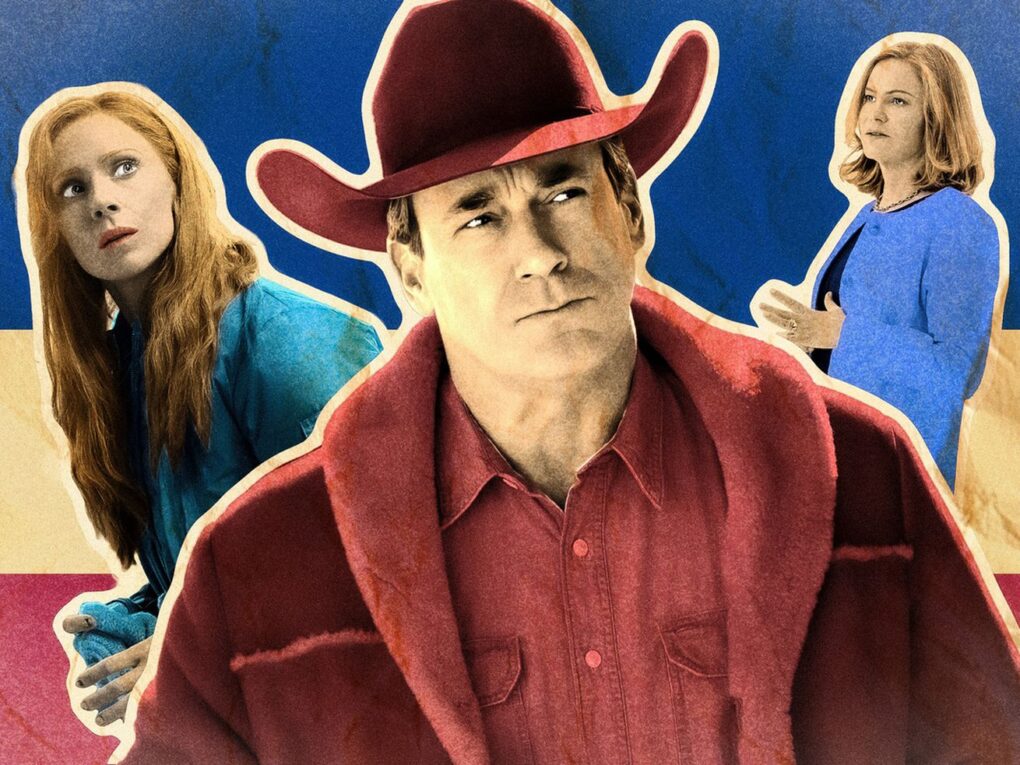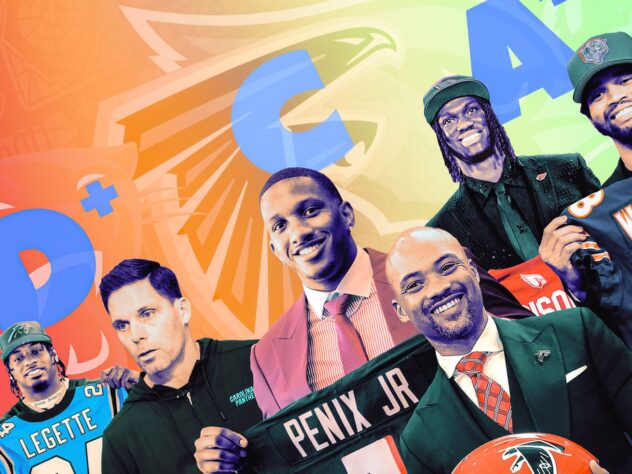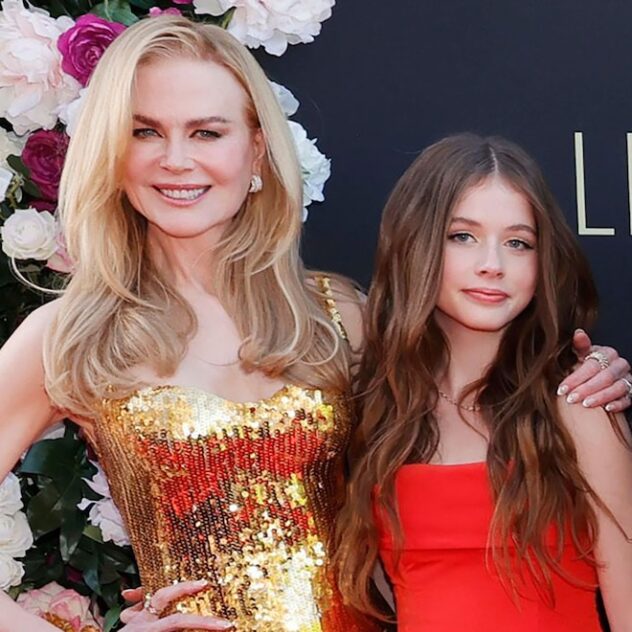The ‘Fargo’ Finale Remembered Its Roots and Proved the Show Can Still Surprise Us

At times, Season 5 wasn’t quite as uncanny or experimental as the franchise has shown it can be, but in the end, it led to a reconciliation far stranger and more unexpected than we could have imagined
/cdn.vox-cdn.com/uploads/chorus_asset/file/25231481/spoiler_warning_v2.2__1_.jpg)
Joel and Ethan Coen famously grew up in Minnesota, but Hollywood is a long way from the suburbs of Minneapolis, and it’s the tension between those two facts, much more than any real place, that provides the true setting for Fargo. The Coens’ 1996 black-comic noir is a masterpiece of perspectival tension, a film that lives both inside and outside its subject; it makes the ice-encrusted universe of the Upper Midwest appear profoundly normal and grotesquely exotic at the same time. Fargo invites us to gawk at the weirdos it depicts—their relentless niceness, their curious vowels—and then tells us the weirdos hold the secret of the entire human condition. Possibly, the weirdos are us.
Compare Fargo to the equally blizzard-prone productions of Scandinavian noir, and you’ll see what I mean. Scandi crime dramas—think The Killing, Trapped, or The Bridge—tend to be deathly serious because the people who produce and consume them see them fundamentally as stories about their own world. Stories about terrible events that happen to us, or to fictional characters who stand in for us, don’t seem funny or ridiculous; they seem terrifying. We tend to want them to be told solemnly, in ways that respect the existential grandeur of our feelings about ourselves. Fargo, by contrast, plays its infamous wood-chipper scene for laughs as much as for chills. It’s not about us, at least not entirely; or else it is, but not all the time. It is and it isn’t. It reassures us that we’re safely removed from its American-gothic milieu of apple pie and violent death, and therefore free to find it funny; and then, with a twist of the knife, it tells us we’re not removed, not safe, and not free at all. There is an evil endemic to the entire American psyche, the film says, and it reveals itself in those endless fields of snow. Watching retribution slowly close in on William H. Macy’s bumbling everyman car salesman is like visiting a zoo and slowly realizing that you yourself are locked in one of the cages—a scenario that does double duty as a nightmare and a pretty good joke.
I’ve been thinking about this tension because I’ve just watched the striking Season 5 finale of the FX TV series based on the Coens’ movie, which makes this a good moment to take stock of what I guess we’re duty bound to call the Fargo expanded universe. In case you’re not familiar with all the latest happenings in the cosmic Midwestern crime series: The 1996 Fargo went on to spawn a multi-award-winning TV show helmed by the writer Noah Hawley. It’s based on the Coens’ movie, but not all that strongly based on it. Each season tells a different story that overlaps tonally but not narratively with the original film; it’s the vibes that are rebooted, not the plots—which, if we have to stare at the same dwindling pool of recycled IP for the rest of our lives, is probably the best we can hope for.
As with the Coens’ original, the stories in TV Fargo tend to revolve around regular people who get caught up in forces beyond their control, forces that invariably put them in conflict with the primordial American evil that, under one name or another, is the true main character of the franchise. Season 2, set in 1979, is my favorite so far; it features Jesse Plemons and Kirsten Dunst as a husband and wife—he’s a butcher, she’s a hairdresser—who make the fatal mistake of trying to cover up the hit-and-run (and subsequent killing) of a local crime boss’s son. Boom, forces beyond their control; boom, primordial evil.
The mostly terrific Season 5 stars Juno Temple as Dorothy “Dot” Lyon, a housewife in Scandia, Minnesota. At the beginning of Episode 1, a brawl breaks out at a local school board meeting. The cause is never specified, but Fargo is more and more focused on contemporary politics; we’re left to assume it’s over book banning or Disney’s gender policies or whatever two-bit Ron DeSantis wedge issue people are screaming about at the moment. In the course of trying to escape the melee with her daughter, Scotty, Dot tasers someone who turns out to be a cop. She’s arrested, and though she’s soon let go, her arrest record pings her former husband, the far-right constitutional sheriff of Stark County, North Dakota, with her location. Boom, forces; boom, evil.
It turns out that a decade or so earlier, Dot changed her identity and fled to a new state to escape this abusive husband, a violent, insurrectionist, Bible-quoting nightmare called Roy Tillman. Roy, who’s up for reelection, appears on billboards all around Stark County, looking square-jawed and patriotic over the slogan “A Hard Man for Hard Times.” He’s played by Jon Hamm, whose past work has presumably given him a glancing familiarity with the intersection of charisma, good looks, and toxic masculinity.
The sheriff has remarried since Dot got away—his new wife is the Trump-loving daughter of a local militia leader to whom the sheriff funnels money and equipment—but he’s not the kind of guy who believes women are allowed to leave him just because he assaulted them. He hires a couple of gunmen to kidnap Dot, but the plan goes awry when Dot, whose perky outward appearance does not scream “unstoppable wrecking ball in combat,” turns out to be an unstoppable wrecking ball in combat. She burns the face off one of the gunmen with a lighter and a hairspray bottle. She escapes the kidnappers’ van. She kills the dude whose face she already burned off by smashing his skull on a gas station toilet. She chases away the other kidnapper, who turns out to be an immortal sin-eater laboring under a centuries-old curse (long story).
Then she goes home and pretends none of it happened. Kidnapped? Nah. She just sort of … went for a walk.
The cop who’s been investigating Dot’s disappearance, Indira Olmstead (Richa Moorjani), finds it hard to swallow her story. Dot’s mother-in-law, Lorraine Lyon, the billionaire owner of a debt collection agency, assumes she kidnapped herself in an attempt to nab a slice of debt collection money. The mother-in-law is played by Jennifer Jason Leigh in full I Am Shouting Like Katharine Hepburn for Some Reason mode, which means we get to hear her say things like “I hope you didn’t give all your walking-around money to that stripper” in a voice that suggests all her terminal r’s have stepped out for a quick martini.
Fargo is very, very good at maneuvering multiple factions into complex conflicts with one another, and there’s a ton of fun to be found in this season’s basic plot mechanics. Before long, the billionaire debt collection boss is at loggerheads with the sheriff, who believes his authority supersedes that of the federal government; there are a couple of FBI agents looking into his criminal connections; the immortal sin-eater is seeking revenge on the sheriff’s men for refusing to pay him; the sheriff’s fascist-doofus son wants to kill the sin-eater; multiple kindly police officers are both investigating Dot and trying to protect her; and Dot is MacGyvering every object in her immediate environment into a weapon designed to cause maximum mayhem.
It’s pretty obvious that all this is going to end in breathtaking amounts of carnage, and so it does, during an armed standoff on the sheriff’s ranch that underscores Season 5’s desire to address American political realities. The FBI surrounds the ranch; Roy puts out a streaming video calling for “patriots” to defend his sovereignty or whatever; truckloads of rifle-bearing militiamen arrive to battle the feds. Fargo is just serious enough for this climax not to feel totally irresponsible, and just silly enough for it not to feel truly responsible, either. You could say the same thing about the show’s depiction of domestic violence, which stages Dot’s memories of the torture Roy inflicted on her as an animated puppet show inside a dream sequence. It’s artfully done and affecting, but it’s still an animated puppet show inside a dream sequence.
Regardless, the finale soon makes a far more inspired and surprising choice. It ends the gunfight early. In a crime noir, you expect the bloody apotheosis to be the last big sequence: a lot of shooting, a quick tender moment by an ambulance, roll credits. Season 5 of Fargo instead spends the entire second half of its finale on the aftermath of the violence. We see normal life resuming. We see Hamm in prison orange. We listen in on some everyday conversations that don’t have a lot to do with the drama that’s just wrapped up. Genre beats are so ingrained in all our brains that there’s something almost scary about leaving them behind. This amorphous sequence of normal life feels infinitely more destabilizing than all the shooting (and stabbing, and bludgeoning, and toilet-head-smashing) that came before it.
At last the sin-eater, Dot’s original kidnapper, shows up at her house. They have unfinished business, he says. The sin-eater’s there for one last bloody apotheosis, and you think, OK, now we’ll get the real climax. But the show confounds your expectations one more time, because instead of fighting, Dot manages to coax this cursed immortal being into falling in with the rhythm of her family’s normal life. Every time he starts to say something grim and death haunted, Scotty starts talking about how she read that chimps can learn to drive, or else Dot starts telling him how to make biscuits. He’s been an outcast for 500 years, and it turns out all he really wanted was a nice family dinner. The sin-eater is the sort of aggressively creepy TV character who intones, “A man is grateful” rather than saying, “Thanks.” This can get a little annoying, but it’s very funny when he says it after Dot’s feckless Kia-dealer husband hands him an orange soda.
I’ll admit this: I’d been grumbling to myself for the past several episodes that in focusing so heavily on Trump-world politics, Fargo had made itself a less weird and more predictable show. The problem, I thought, was that it was essentially turning David Lynch into Glass Onion, trading the Coens’ deep and strange understanding of American evil for a superficial, schematic one. Fargo seemed to be telling me a lot of stuff I already knew. Patriarchy is bad. Women are fierce and strong. Law enforcement should prioritize care over control. Its themes seemed to be boiling down to a checklist of blue-state Twitter sentiment, and by telling its upscale coastal audience that our primordial evil was Republican politics, it was flattening the inside-outside tension that made the movie so vital. Fargo was no longer about us and them simultaneously, or about showing us that we’re always also them. It was just about them.
I still have a sense that Season 5 wasn’t quite as uncanny or experimental as it wanted to be, and that its decision to organize itself around a received narrative of American politics was largely to blame for this shortfall. I too find that narrative terrifying, but I want art to take me places I haven’t imagined yet, not simply repeat what I’ve already seen in the news. That’s why the finale was such a relief, and such a positive sign for the future of the series. By leading us to a reconciliation far stranger, more unexpected, and harder to summarize than a simple healing of political divisions, the show proved it can still be surprising. And it underscored something it had previously left implicit, something that connected it to the Coens’ original vision. Fargo is a series about evil, but the finale showed us that Dot was something we haven’t seen since Frances McDormand’s character in the movie: a correspondingly timeless and powerful force for good.













